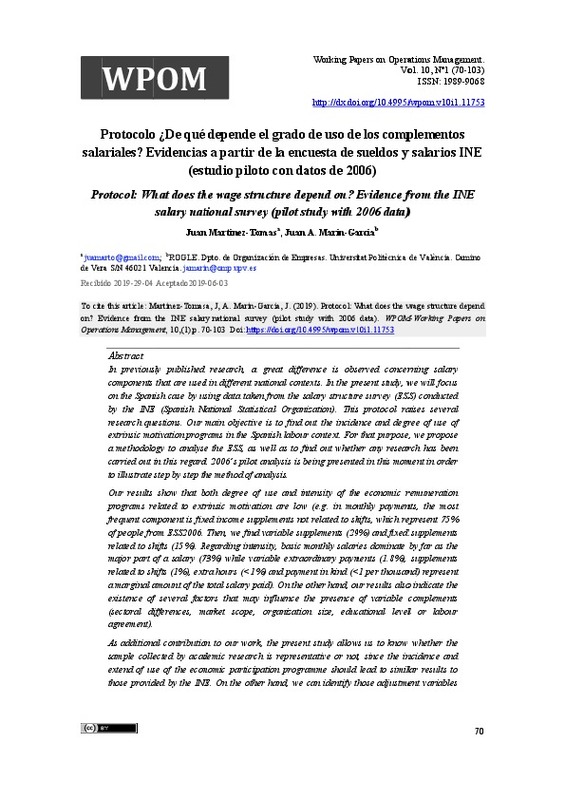|
Resumen:
|
[EN] In previously published research, a great difference is observed concerning salary components that are used in different national contexts. In the present study, we will focus on the Spanish case by using data taken ...[+]
[EN] In previously published research, a great difference is observed concerning salary components that are used in different national contexts. In the present study, we will focus on the Spanish case by using data taken from the salary structure survey (ESS) conducted by the INE (Spanish National Statistical Organization). This protocol raises several research questions. Our main objective is to find out the incidence and degree of use of extrinsic motivation programs in the Spanish labour context. For that purpose, we propose a methodology to analyse the ESS, as well as to find out whether any research has been carried out in this regard. 2006’s pilot analysis is being presented in this moment in order to illustrate step by step the method of analysis.Our results show that both degree of use and intensity of the economic remuneration programs related to extrinsic motivation are low (e.g. in monthly payments, the most frequent component is fixed income supplements not related to shifts, which represent 75% of people from ESS2006. Then, we find variable supplements (29%) and fixed supplements related to shifts (15%). Regarding intensity, basic monthly salaries dominate by far as the major part of a salary (73%) while variable extraordinary payments (1.8%), supplements related to shifts (1%), extra hours (<1%) and payment in kind (<1 per thousand) represent a marginal amount of the total salary paid). On the other hand, our results also indicate the existence of several factors that may influence the presence of variable complements (sectoral differences, market scope, organization size, educational level or labour agreement).As additional contribution to our work, the present study allows us to know whether the sample collected by academic research is representative or not, since the incidence and extend of use of the economic participation programme should lead to similar results to those provided by the INE. On the other hand, we can identify those adjustment variables that influence in the salary distribution composition. All work done so far allows us to confirm that the research hypotheses are, at least, relevant because they have not been answered up in the literature published to date.
[-]
|









